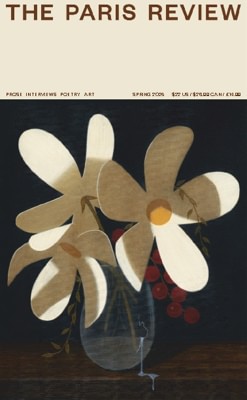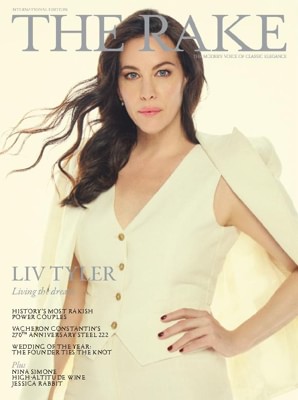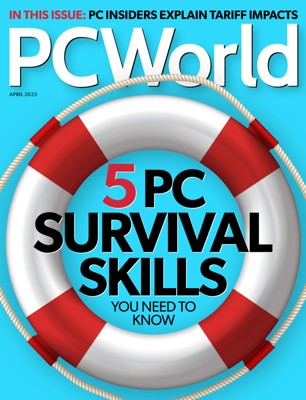Digitala tidskriftsprenumerationer. Över 6 000 publikationer.
Can science missions mitigate the effects of cabin fever?
South Africa has a tight regime for scientists wanting to “overwinter” in Antarctica. The 13-month assignment to an isolated research base on the top of a cliff edge is, as the environment ministry drily put it, “testing”. Average annual temperatures are -16C but drop much lower during the winter darkness. All applicants are subjected to psychometric analysis “to ensure they are able to cope with the isolation, and can work and live with others in the confined space of the bases”, said the Department of Forestry, Fisheries and the Environment. “Only candidates who do not have any negative outcomes from all the background evaluations will be considered.” But can humans ever fully prepare for long-duration remote scientific experiments? The crisis currently facing the overwintering crew at the Sanae IV station,…
Undermining Science
Remember “Sharpiegate”? Back in September 2019, then-President Trump appeared to alter the path of Hurricane Dorian—at least on paper, with a marker. Craig McLean, who had been at the National Oceanic and Atmospheric Administration for nearly 40 years, was the acting chief scientist and head of NOAA Research. Objecting to the controversy contributed to his demotion. He explains what he anticipates for Trump’s second term. DORIAN WAS A nasty hurricane. It took lives in the Caribbean and the Bahamas and was making a move toward the Florida Panhandle. Days out, there was a small chance of tropical storm–force winds in Alabama. The National Weather Service forecasted, correctly, that the storm was going to make a hard right turn and certainly not impact the people of Alabama. But Trump tweets something…
Melting Moments
“The more melt, the more stakes you have to collect. I don’t think I could have carried any more stakes. Nearly a third. That’s the amount of ice lost from New Zealand’s glaciers since 2000. Almost 300. That’s the number of individual glaciers that have vanished forever since we started monitoring them regularly about half a century ago. According to a recent global assessment, New Zealand ranks third after the European Alps and the Caucasus, in Eastern Europe, in the proportion of glacial ice lost to rising temperatures. And the glaciers that remain are now melting at an accelerating pace. In early March, I witnessed the changing icescapes of the Southern Alps first hand when I joined glaciologists on their annual snowline survey. Each year, the team flies across the…
We’re Not Prepared
THE NUMBERS COMING OUT OF LOS ANGELES COUNty are staggering: more than 16,000 buildings destroyed, some 2,000 structures damaged, and over 150,000 people ordered to evacuate. Whole swaths of Pacific Palisades and Altadena have been wiped off the map. Obliterated along with them: basic shelter; countless families’ primary source of wealth; and the incalculable loss of memories, sensations, routines, possessions, and a sense of normalcy. Whenever something like this happens, the vultures of displacement and development start circling. Mike Davis put it succinctly during the Woolsey Fire of 2018 when he was asked what he expected to see after the flames died down: “Bigger mansions.… What tends to disappear is rental properties, trailer parks, people who don’t have adequate insurance.” In other words, the poor and working classes suffer first—and…
Arctic permafrost is now a net emitter of major greenhouse gases
AREAS of permanently frozen ground in northern regions are now emitting more carbon into the atmosphere than they absorb, causing the planet to heat even further, according to the first Arctic-wide estimate of all three major greenhouse gases. Frozen ground, or permafrost, which underlies 15 per cent of the northern hemisphere and contains twice as much carbon as the atmosphere, has shrunk in area by an estimated 7 per cent in 50 years as it thaws. Recent research suggests the thaw will slow but not stop if we can limit global warming to 1.5°C above pre-industrial levels. Yet scientists haven’t been sure whether the permafrost region has become a net emitter of greenhouse gases. Even as the thaw releases more carbon compounds from the once-frozen biological matter in the ground,…
HOW I’M RAISING ECO-FRIENDLY KIDS ON MY TERMS
BEFORE I HAD KIDS, I HAD BIG PLANS. BREAST-feeding, of course. Cloth diapers, absolutely. Only stainless-steel or glass bottles, sippy cups and plates. Cleaning supplies made from white vinegar, lemon and essential oils. The list goes on and on. Here’s the real confession: I didn’t just plan on doing these things myself. As an environmental-health journalist, I’d spent years writing articles about why other parents should do this stuff too. Let me repeat: I wrote them before I had kids and, frankly, had no idea how hard it would be to clean spit-up stains with baking soda or pack zero-waste lunch boxes with only organic homemade meals. The reality check set in fast. When I got pregnant, my husband talked me out of cloth diapers in my first trimester. And…
Composing a Painting
The tried-and-true technical approach to depicting depth in a painting involves breaking the composition into three planes of vision with a distinct focal area in each plane. There's more to a successful painting, however, than just the portrayal of depth. If we want to captivate viewers' attention—to encourage an audience to linger for a time with the work—we need to think of a painting as a visual journey. SET THE STAGE I like to think of the process of composing a painting as similar to setting a theater stage, where the director strategically places elements not only to enhance the narrative but also to provide a sense of depth and—most importantly—relevance. Th is approach enriches the viewers' experience, encourages them to engage with the narrative and, ultimately, keeps hold of…
FARMHOUSE INN
Driving west, towards the Pacific Ocean, an opulent retreat is hidden behind majestic oak trees and rolling hills. Tucked away in the far corner of Sonoma County, the Farmhouse Inn is a testament to the superb blending of history and luxury. For travel enthusiasts and seekers of extraordinary experiences, this destination offers more than just a place to stay—it provides a journey through time and tradition. Creating a legacy like the one Farmhouse Inn has developed over the years takes more than just luck; it’s a narrative woven through five generations of unwavering hard work, commitment, and an enduring vision. This dream originated far from the Californian wine country landscapes, tracing its roots back to the Italian countryside, where the great-grandfather of the current proprietors first sowed the seeds of…
Flamingo Hoops
MATERIALS Black tigertail12 x black crimps2 x black continental earrings BEADS 2 x Swarovski flower pieces – Fuchsia26 x 4mm Swarovski crystals – Light Rose38 x 4mm Swarovski crystals – Fuchsia50 x 4mm Swarovski crystals – Siam24 x size 11 seed beads Pink TOOLS chain nose pliersround nose plierswire cutterscrimping pliers STEP ONE Thread 1 x seed bead, 13 x Light Rose crystals, 1 x seed bead onto Tigertail length. Attach onto the flower piece using 1 x crimp on each end with both ends of the Tigertail going into the one petal. STEP TWO Thread 2 x seed beads, 19 x Fuchsia crystals, 2 x seed beads onto Tigertail length. Attach onto the flower piece using 1 x crimp on each end. Attach into the next petals on the…
Solid state
It is well documented that burning hydrogen, either as a gas or a liquid, to power racecars produces minimal emissions at the tailpipe, and that the emissions that are produced are less harmful to the environment than those from fossil fuels. What is less clear is how to create that hydrogen, the environmental impact of doing so, and then storing it safely and cheaply in order to be able to use it in a vehicle. Even ignoring all the impact of creating hydrogen in the first place, storing it as a gas in a chamber suitable for cars requires extreme levels of pressure, which then need to be contained. Put a high-pressure gas tank in a racecar and immediately there are some obvious concerns. Hang any such tanks outside…
A UNIVERSAL MIGRATION
IN recent years, there has been renewed interest in the Universal Rule, introduced by Nathaniel Herreshoff in the late 1890s. The rule aligned with letters of the alphabet, with I being the largest class, followed by the infamous J Class down to the S Class, a small open daysailer still actively raced in the US. European preservationists have long maintained many of these yachts and their history. The P Class is one of the Universal Rule era that has attracted the strong interest recently from Europe. Over the past 10 years, four of these classics have been found, restored and shipped off to Europe. The class was originally designed to ply New York’s Long Island Sound, Newport and water north of Boston, in the area of Marblehead. The yachts came…
AN ARTIST FOR THE HERE AND NOW
In February 2013, the Moderna Museet, Stockholm’s national museum of modern art, opened a blockbuster show, “Hilma af Klint: A Pioneer of Abstraction,” heralding a then-obscure Swedish artist—a woman, a mystic—who painted at the turn of the 20th century. Believing her art carried spiritual messages that would benefit humankind, af Klint worked with non-figurative forms years before her male peers Wassily Kandinsky, Piet Mondrian and Kazimir Malevich were credited with inventing abstract art. In Stockholm, the show shattered the museum’s attendance records, and it eventually attracted more than a million visitors as it toured museums across Europe. Now, 81 years after her death, this once over-looked Swedish artist, her work barely shown in her lifetime, has become a posthumous global sensation and her country’s biggest art export. “One should not…










